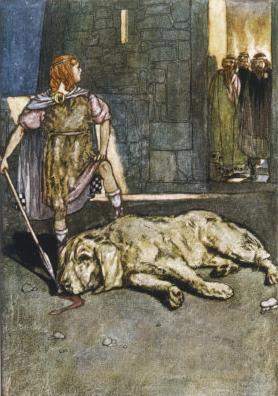Jarhyn
Wizard
- Joined
- Mar 29, 2010
- Messages
- 17,615
- Gender
- Androgyne; they/them
- Basic Beliefs
- Natural Philosophy, Game Theoretic Ethicist
Rather, my point is that doubt is in fact the strength and core of my philosophy: that all things except the necessity of doubt must be doubted whenever the opportunity presents itself without significant immediate peril, and that there is a model for how and when and where to apply doubt to knowledge.You have a degree of humility and self-awareness that I find refreshing in these quarters. Your awareness of the over-riding spiritual message of the New Testament counts in your favour. The endless sterile speculation about the man, Christ, however, is an indication of weakness in your ethics and philosophy. Not that I blame you. This has been the favourite pseudo-intellectual sport of the scholastic pundits for millennia. It is now democratized: every yokel with a modem has a theory of Christian origins. The problem with it all is that it blinds those with a real capacity to see the great truth in all this, that it is a man who embodies the great truth of love, and that it is through his example that the whole of mankind is destined to embody this truth.@No Robots , I would hope at this point you appreciate that I'm not some bizzaro Nazi trying to poo-poo your beliefs, but trying to show you that there's a stronger spine in them that cannot be broken by the Mythicist or Amalgamist narratives but rather is made stronger through Amalgamism, this immortal idea of rebirth through empathy and love and forgiveness, and that literal resurrection would insult rather than bolster this necessary truth, and tainting the purity of the experiment were it to happen.
I'm just kind of pissed how badly it was fumbled as a concept by... Pretty much everyone?
I would say that this requires forgiveness of each other but not of self. We must remember who we have been and allow that goad to make us better, and to not be people who are awful, to not give in to our demons through understanding this idea, not a name, but radical love of self and others.
Here's another story, perhaps different from the ones presented in the gospels, and almost certainly a fiction but I will leave it to you to decide it's truth:
Once upon a time in Palestine a man named Jesus talked to someone who has killed several sheep and needed to find a way and a reason to not graduate to people. Jesus taught him the idea of radical love of self and others and he saw in this a reason to love and attempt empathy, so as to avoid living forever in infamy among the stories of his fellows.
The young budding sociopath sees truth in these words and Jesus convinced them that looked upon him with suspicion of having murdered a flock of sheep one night that upon hearing "the holy name", the gospel of radical love, the demons have been drowned in the flock of sheep the sociopath had already killed.
Whether or not he committed murders, Jesus saved his life, and gave him what may be his path towards stepping away from who he was.
It is entirely appropriate to doubt that for which there is little evidence, such as the immediate life and historical existence of one person as the basis for so many stories, when the evidence points to an amalgamation when viewed from the far side of initiation.


